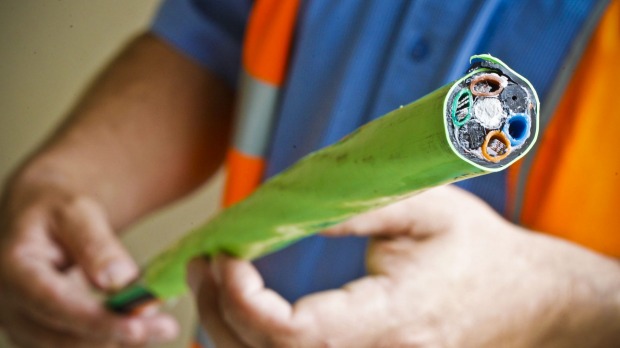Published on the 26/04/2013 | Written by Newsdesk

The Coalition’s National Broadband Network plan that envisages retaining copper for the ‘last mile’ has received a boost with the news that ‘vectoring’, the latest technology to increase the data carrying capacity of copper, is rapidly gaining market acceptance…
At the Coalition press conference launching its NBN policy, shadow communications minister, Malcolm Turnbull talked up VDSL and vectoring saying: “Copper is delivering much faster speeds today, with VDSL2+ with vectoring you’re getting over 100Mbps. You are getting speeds that are as high or higher than what the NBN is providing over fibre. This is not me talking… telcos around the world are delivering this.”
One of biggest factors limiting the throughput of broadband on copper using DSL technologies is interference between the signals carried on different pairs in cables that can carry hundreds of pairs of copper wires. Vectoring extends the throughput by managing the signals on all pairs in a co-ordinated fashion.
According to George Ginis, vice president of product management at US-based DSL technology company, Assia, “When you have multiple pairs that are interfering with each other VDSL2 is limited to about 40 or 50Mbps even in the shortest loops. With vectoring you eliminate that ceiling.”
Alcatel-Lucent claims to have shipped over one million lines of vectoring equipment to 11 operators around the world, in little over a year since it launched the product commercially. “[Vectoring] enables service providers to achieve downstream broadband speeds of 100Mbps over existing copper connections at up to 400 metres, the company said. “It also has an equalising effect, enabling service providers to ensure the same high speeds over lines of varying quality.”
According to Ginis, the cost of vectoring technology is likely to come down rapidly to the point where it is comparable to current VDLS2 technology.
“When vectoring technology first came out the cost per port was much higher than VDSL or ADSL ports, but I think it is reasonable to expect that, over a surprisingly short period, the cost per port will become comparable to the cost of the VDSL ports,” he said. “I’ve heard that the chips built for VDSL customer equipment already come ready for vectoring.”
Last November market research firm Broadband Trends issued a report on vectoring in which it predicted that 27 percent of VDSL2 lines globally would use vectoring by 2017.
“[Vectoring] provides operators with a solution that can address the immediate time-to-market, competitive and regulatory challenges; while operators prepare their networks for the eventual migration to FTTH,” it said.



























